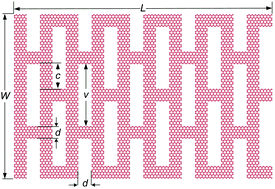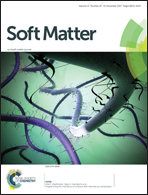Large stretchability and failure mechanism of graphene kirigami under tension
Abstract
From the macro- to the nanoscale, kirigami structures show novel and tunable properties by tailoring the original two-dimensional sheets. In this study, the large stretchability and failure behavior in graphene nanoribbon kirigami (GNR-k) are obtained using the finite element (FE) method and molecular dynamics (MD) simulations. The carbon–carbon bond in the FE method is equivalent to a nonlinear Timoshenko beam based on the Tersoff-Brenner potential. All the results from the present FE method are in reasonable agreement with those from our MD simulations using the REBO potential. These results from the two methods show that the maximum ultimate strain of GNR-k (around 100%) is around 4 times higher than that of a pristine graphene nanoribbon (GNR), whereas the minimum ultimate stress of GNR-k is around one order of magnitude lower than that of the GNR. In particular, the large stretchability of GNR-k is indirectly proven to be mainly derived from the out-of-plane bending deformation by measuring the nonlinear mechanical properties of paper kirigami. Our results provide physical insights into the origins of the large stretchability of GNR-k and make GNR-k applicable to flexible nanodevices.



 Please wait while we load your content...
Please wait while we load your content...